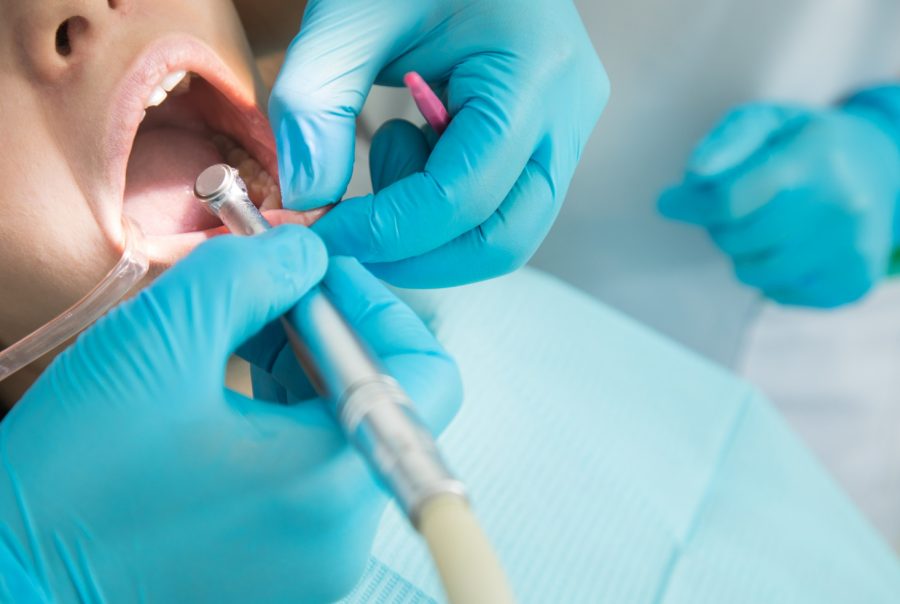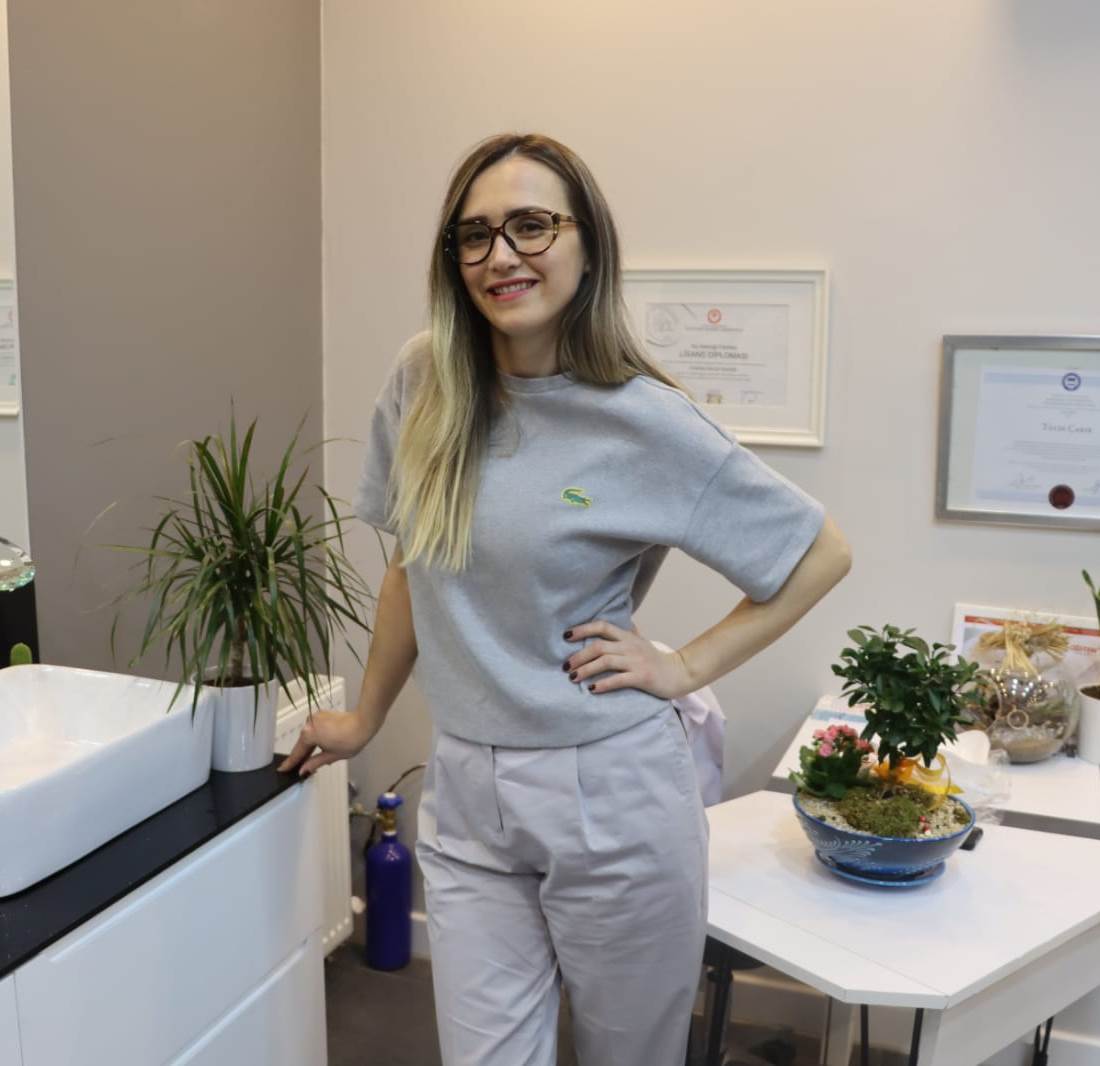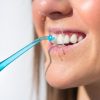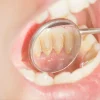Get information about tartar removal with the explanation of expert dentist Merve Özkan Akagündüz.
Dental Calculus (Tartar) Removal

Dental Calculus Removal, Doredent İstanbul
Dental calculus, commonly known as tartar, is defined as the hardening and mineral accumulation of dental plaque. Dental plaque is a bacterial film formed from the accumulation of food residues. If this layer is not cleaned, substances such as calcium accumulate within it and harden, resulting in the formation of dental calculus.
Dental calculus, commonly known as tartar, typically accumulates at the junction of the teeth and gums, encircling the tooth like a collar. It is most frequently found on the inner surfaces of the lower front incisors and the cheek side of the upper first molars. The color of dental calculus can vary from yellow to brown.
The formation of dental calculus is quite common and can negatively affect the health of teeth and gums if not removed. Therefore, periodic dental check-ups are essential. To prevent its formation, it is important to brush teeth at least twice a day, use dental floss, and employ mouthwash when necessary, in conjunction with brushing and flossing. Additionally, consuming hard fruits like green apples can mechanically help clean the teeth.
Removal of dental calculus can only be performed by a professional in a clinical setting. Various home remedies found on the internet involving products like lemon and vinegar can adversely affect your dental health.
Dental calculus removal is typically conducted by a dentist using ultrasonic and periodontal instruments without the need for an anesthetic. During the cleaning process, calculus is removed from the tooth-gum junction, followed by polishing with polishing paste and brushes to smooth and shine the teeth. The procedure is usually painless, though some sensitivity may be experienced.
If a patient with extensive dental calculus is also suspected of having underlying periodontal disease, further diagnostic tests and advanced cleaning procedures may be necessary. In such cases, deep cleaning and root planing under local anesthesia may be required. For more severe cases, consultation with a periodontist may be necessary.
The frequency of periodic dental visits can vary depending on the patient’s specific situation. Although a biannual check-up is usually sufficient, some cases may require closer monitoring every three months. This proactive approach can prevent dental and gum diseases, gum recession, and tooth loss. It can also prevent the development of bad breath related to calculus buildup.
As of 2024, the price for dental calculus removal in Turkey is set by the Turkish Dental Association at 1700 TL (including VAT) per jaw.
Post-Cleaning Care for Dental Calculus Removal
Sensitivity in the teeth and gums for a few days post-cleaning is normal. Avoid very hot foods and drinks for the first 24 hours. While pain medication is generally not necessary, it can be beneficial in some cases. To prevent reaccumulation of calculus, maintaining oral hygiene is crucial. Teeth should be brushed at least twice a day and dental floss should be used regularly. Using mouthwash as recommended by your dentist can also be helpful. Visiting the dentist every six months can prevent potential problems from developing. It’s important to remember that oral and dental health is an integral part of overall health and requires due attention.
Can Dental Calculus Removal Be Performed During Pregnancy?
Gum problems are a common issue during pregnancy due to hormonal effects, making the gums swollen and more prone to bleeding. The impact of food residues on the teeth can be greater during this time. Therefore, pregnant women need to pay extra attention to oral hygiene. Generally, there are no contraindications to performing dental calculus removal during pregnancy, though it may be advisable to obtain approval from an obstetrician. The second trimester is typically the safest period for dental treatments.
How Often Should Teeth Cleaning Be Done?
It is important to visit the dentist regularly every six months for oral and dental health. This allows for the prevention of some problems and the opportunity for early intervention in potential issues. During these routine check-ups, a person’s tendency to form tartar, oral hygiene habits, and deficiencies can be identified, and necessary warnings can be given. Based on these assessments, a personalized routine for tartar cleaning can be planned. In some cases, cleaning every six months may be sufficient, while in other cases, annual cleaning might be adequate.
Why Do My Teeth Start to Loosen After Tartar Cleaning?
Firstly, I would like to emphasize that tartar cleaning does not harm the teeth or surrounding tissues; on the contrary, it eliminates situations that have the potential to create problems. When tartar accumulates excessively on the tooth surface, it can hide gaps between the teeth, gum recessions, and bone tissue loss around the teeth. Once the tartar is cleaned, these issues, which were already present, may become apparent. This can lead to tooth mobility. In such cases, treatments for gum problems such as curettage or surgical operations may be considered. For loose teeth, stabilization applications can be performed using wires or special threads from behind the teeth.
Why Does Sensitivity Occur After Tartar Cleaning?
Tartar acts as a form of insulation by covering gum recessions, root surfaces, and tooth surfaces with enamel loss. The removal of this layer during tartar cleaning can lead to sensitivity issues. If there is no damage to the tooth, the resulting sensitivity is temporary. Proper and regular brushing with fluoride-containing toothpaste can speed up the resolution of sensitivity. However, if the root surface of the tooth is exposed or there is gum recession, a specific treatment may be necessary. If the enamel of the tooth is gone and the dentin tissue is exposed, a restorative method might be considered.
Tartar can sometimes cover certain problems, and a person may not be aware of them. Tartar cleaning does not pose a risk of causing damage to the teeth. If there is an existing problem in the tooth, it can only become apparent.
Merve Özkan Akagündüz
I was born in Edirne in 1988. In 2007, I began my master’s degree in Dentistry at Istanbul University (Çapa) Faculty of Dentistry and graduated in 2012.
In 2014, I started my specialization in the Department of Orthodontics at Süleyman Demirel University Faculty of Dentistry. In 2019, I earned the title of Orthodontist and was appointed to Çorlu ADSM, where I worked as an Orthodontic Specialist Dentist from 2019 to 2022.
As of 2024, I have been continuing my practice in my own clinic.








